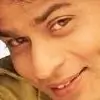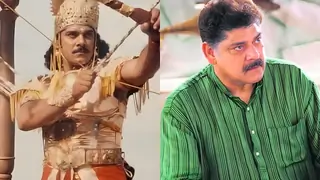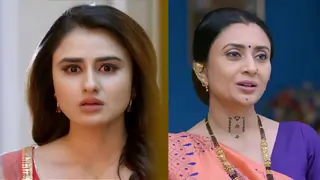Your comments are welcome and please add songs to all these legendary singers, but please keep it short and simple (no comparisons please).
This is just a brief introduction of all the great singers from Ido-pak, you can add to this thread, I am ust trying to give a brief introduction of all these legends (just the beginning of their careers).
Lata Mangeshkar
Name: Lata Mangeshkar
Born: September 28, 1929 - Indore
Lata Mangeshkar is India's most well known playback singer. She has sung in all the major Indian languages and is one of the most recorded artists in the world.
Lata was the oldest of several children. She had a younger brother named Hridayanath Mangeshkar, as well as three younger sisters named Asha (Bhosle), Usha and Meena(Of these Asha Bhosle would grow up to rival Lata in the world of film music.)
Her father Dinanath was an accompanied classical vocalist and was very active in the theatre. It is said that Lata made her acting debut at the age of five in a play in which her father was participating.
Lata's early film career was characterized by numerous changes in direction, false starts, and a general unsteadiness. It was not at all clear that she was destined to be a successful singer.
1942 proved to be a very crucial year in here life. This was the year that the film "Kit Haaal" was release. This was the first film that Lata recorded for; unfortunately her song would be cut and not make it to the finished version.
Lata was only 13 years old when her father died, but as the oldest child, responsibility fell upon her to help take care of her families financial needs. She took to acting in small films in order to do this. Her first appearance was a very small role in Pahili
Mangalagaur (1942).
The period in the early 40's did not look promising for Lata. Her thin voice was very different from the heavier voice quality that was in vogue like Noor Jahan. She received numerous rejections. It was not until 1947 that she was able to get a hold in the industry by singing "Pa Lagoon Kar Jori Re" in the film "Aap ke Sewa Main" (1947). Lata sang several songs in other films over the next few years, but her first big hit was in 1949 with "Aayega Aanewaala".
There is no doubt that the partition played a role in Lata's rise to fame. During the partition, there was a disruption when many directors, producers and artists left Bombay, while others migrated to India from Lahore. One of the most notable artists to leave India, was Noor Jahan, who was the undisputed queen of the filmsong at the time. This disruption
opened the doors to Lata in an industry that previously may have been harder to get into.
Asha Bhosle
Birth Name: Asha Mangeskar
Born: 8 September 1933, Satara, Maharashtra, India
Nickname: The Queen of Indipop
One of the greatest playback singers in Bollywood history, Asha Bhosle has recorded over 10,000 songs for over 800 movies. Although every class (ghazals, pop, etc) of song was within her vocal range, her specialty was in sensual songs or Western-styled songs- she had an uncanny knack for making every actress for whom she sung, from Zeenat Aman to Urmila Matondkar.
Like her sister, the legendary Lata Mangeshkar, was trained by her father, Dinanath Mangeshkar, in classical music, and it was only a matter of time
before she too turned to playback singing. She made her debut with the film Chunaria (1948), but it took her a long time to make it to the top. Between 1948 and 1957, she sang more songs than any other playback singer, but the majority of these were in small, indistinct films - and whatever big film she got a chance to sing in, it was usually for the heroine's best friend or in a duet with bigger singers like Shamshad Begum, Geeta Dutt, or her own sister.
However, in 1957, she got her big break with composer O.P. Nayyar in the films Tumsa Nahin Dekha (1957) and Naya Daur (1957). And 1958 saw the release of three of her films: Lajwanti (1958), Howrah Bridge (1958), and Chalti Ka Naam Gaadi (1958); their hit songs took Asha right up to the top. Thereafter, she became Nayyar's premier singer until the early 1970s, and they created musical magic together, particularly in the films Phir Wohi
Dil Laya Hoon (1963), Mere Sanam (1965), Humsaya (1968), and Pran Jaye Par Vachan Na Jaye (1974).
Mehdi Hassan
Mehdi Hassan affectionately called Khan Sahib and titled as "Shahenshah-e-Ghazal"(English: King of Ghazals)is a true Legend Ghazal Singer and a Playback singer for Lollywood
Ustad Mehdi Hassan was born in the village of Luna in Rajasthan, India in 1925 into a family of rich traditional singers. He is the 16th generation of hereditary musicians hailing from the Kalawant. Kala means "Art" and Want means "teacher" so he is from family of teacher who taught Kings and Royal families the art of music. Mehdi Hassan received his musical training and grooming under his father, Ustad Azeem Khan and his uncle Ustad Ismail Khan who were classical singers, well-versed in dhrupad singing. They instructed him in classical music and voice production within the framework of classical forms of thumri, dhrupad, khayal and dadra, from the young age of six. At the age of eight he was singing in darbar of Maharaja's castle in Jaipure on Royal family's request as often as 3 times a week and instantly became the official singer of the castle. After the Partition of India, 22 year-old Mehdi Hassan and his family migrated to Pakistan . Mehdi Hassan began his first business of a bicycle shop and later became a car and diesel mechanic. Despite the hardships, his passion for music and wrestling didn't wither and he kept up the routine of practice on a daily basis that led to the great succesful career.
Ustad Mehdi Hassan reveled his true talent on Radio Pakistan in 1950, primarily as a thumri and ghazal singer, which earned him recognition all over Pakistan and within the musical fraternity. Short after Ustad Mehdi Hassan was offered his first film song that led to a huge succes in Film Industry.By the time"Gulon Mein Rang Bhare" made it to the "topten chart", Ustad Mehdi Hassan was ruling the world of Music and Film Industry by doing 5-7 songs a day and Radio Programs onces a week and private mehfils 3-4 times a week. Ustad Mehdi Hassan's voice and unique performance skills in ghazal singing are unmatched in the world of South Asian music. The 50s, 60s and 70s can be named Mehdi Hassan's decades', as there was hardly any Actor in the Pakistani Film Musical scene on whom Mehdi Hassan's songs were not filmed.In 60s Ustad Mehdi Hassan began his first world tour traveling through Canada, USA, England, Austraillia and Rome, giving beautyful Ghazal concerts and he continued traveling the world throughout the 70s, 80s and 90s.
Mehdi Hassan also had a passion for Urdu poetry and began to experiment by singing ghazals in a very unique way that was never done in past history. He chose his raagas to define the feelings through notes of each word of poetry. He sang ghazals of all the renowned Urdu poets such as Khalib, Faiz Ahmed Faiz, Qateel Shifayee,Ahmed Faraz, Daagh, Parween Shakir, Farhat Shezad, Mir Taqi Mir,Saleem Kuser, Bahador Shah Zafar. His innovative style was soon appreciated by both masses and discerning audiences. History shows Ustad Mehdi Hassan sung over 54000 Songs, Ghazals and Thumri all combined since 1950s-2000.
He is universally acclaimed as the finest ghazal singer of all time. His mastery over even the most difficult of raags makes him the undisputed emperor of South Asian Classical Music. Ustad Mehdi Hassan invented many different scales and raagas such as "Sahara"named by Ustad Sultan Khan (Sarangi Nawaz) in 1983, the most populer ghazal in that raaga is "Jub Tere Nain Muskurate Hai", and some of the scales he created was for ghazals such as "Mumkin Ho Aapse Tu Bhooladi Jiye Mujhe","Kiya Bhala Mujhko","Go Zarasi Baat Per","Kese Chupaoon Raz-e-Ghum","Yatu Afsar Mera Shaha Nabanaya Hota", are the most difficult scales he ever created.
The ultimate tribute to his greatness was from the eternal nightingale,
Lata Mangeshkar, who compared his songs to " voice of god ".



























